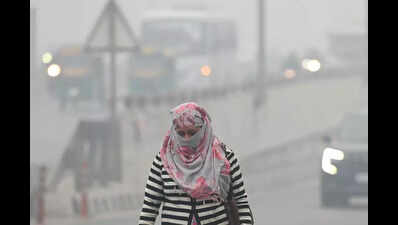- News
- City News
- delhi News
- Taking Your Breath Away: Ground-Level Ozone Breached On 56 Days Since March
Trending
Taking Your Breath Away: Ground-Level Ozone Breached On 56 Days Since March
New Delhi: This summer, ground-level ozone exceedances were reported on 56 days between March 1 and April 25, according to a new analysis by Centre for Science and Environment (CSE).
The worst day in terms of high ozone levels was April 13, when 25 out of 39 stations in Delhi reported exceedance. The hotspots are Nehru Nagar, Najafgarh, Major Dhyan Chand National Stadium and Sri Aurobindo Marg. Of the total 40 stations in the city, the average ozone levels did not exceed the standard at just 10 stations this summer so far.
You Can Also Check: Delhi AQI | Weather in Delhi | Bank Holidays in Delhi | Public Holidays in Delhi
Exceedance is computed as the daily maximum eight-hour average crossing the ground-level ozone's eight-hour standard, which is 100 microgram per cubic metre.
The analysis showed that Nehru Nagar station in Lajpat Nagar recorded the highest exceedance on all 56 days from March 1 to April 25. It was followed by Najafgarh at 54 days and Major Dhyan Chand National Stadium at 50 days.
Out of the 56 days, ozone levels exceeded more than 40 days at Sri Aurobindo Marg, Ashok Vihar, Okhla Phase 2, Wazirpur, Patparganj, Ayanagar, Vivek Vihar, Jahangirpuri and Rohini. The station where the average ozone levels did not exceed the standard so far are Anand Vihar, IHBAS, ITO, NSIT-Dwarka, Shadipur, Chandni Chowk, DTU, East Arjun Nagar, Lodhi Road, Narela and Siri Fort.
Ozone has serious health consequences. "Ozone is a highly reactive gas. Even short-term exposure can aggravate asthma symptoms and other respiratory illnesses. Long-term exposure leads to reduced lung function and chronic obstructive pulmonary disease. It is important to control ozone at early stages," said Roychowdhury.
TOI earlier reported that the Union environment, forest and climate change ministry informed National Green Tribunal in April this year that it would constitute an expert committee to study the impact of ozone pollution in cities across the country and submit a report.
Central Pollution Control Board, which analysed ground-level ozone in 10 metropolitan cities in 2023 and 2024, found that Delhi-NCR and Mumbai metropolitan regions reported higher exceedances of ozone concentration compared to other regions in the country.
CPCB told NGT that the major sources of ozone precursors—nitrogen oxides and volatile organic compounds (VOC)—are burning of coal, use of oil in motor vehicles, industrial activities, waste burning, gasoline combustion, wood combustion and evaporation of liquid fuels and solvents. Some biogenic sources—green areas and crops—are also responsible for VOC emission, leading to the formation of ground-level ozone.
End of Article
Follow Us On Social Media










